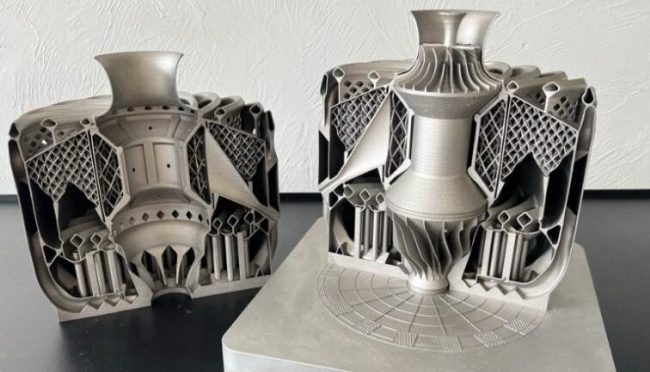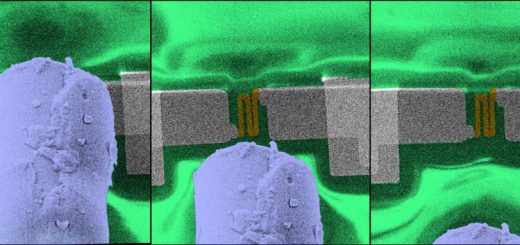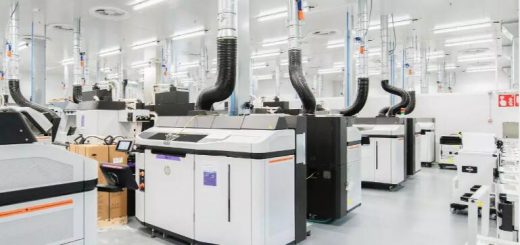PTC Shows Entirely 3D Printed Jet Engine at LiveWorx 2023
PTC showcased the world’s first fully 3D-printed jet engine at its LiveWorx 2023 premier event, which took place in Boston, Massachusetts on May 15-18. The micro turbojet engine, weighing approximately eight pounds and printed with Inconel, is a single, complete assembly, including all rotating and stationary components, and was designed in Creo CAD software. It was printed on an EOS metal AM system using Inconel. To be very clear: it was fully printed in one single assembly, including all rotating and stationary components for full functional Integration. It weighs approximately 8 pounds.

The jet engine project was conceived by Dr. Ronen Ben Horin, a VP of Technology at PTC and a Senior Research Fellow at Technion – Israel Institute of Technology, and Beni Cukurel, an Associate Professor of Aerospace at Technion. The two brought together many years of deep scientific research in jet propulsion and engineering expertise in the design of advanced engines and designing for additive manufacturing.
Designing and printing a fully self-supported micro turbojet engine, including the 50,000 RPM turbine, that requires no assembly, represents a significant breakthrough in designing for additive manufacturing. After all, a jet engine is one of the most powerful and complex things out there, between the performance requirements for operation and the intricacy of the components – many of which rotate or move in some way. The project shows how far Creo’s core design capabilities and ability to transfer sophisticated designs directly to a 3D printing environment have come
 Creo 10 is launching on June 8th.
Creo 10 is launching on June 8th.
This proof point for additive manufacturing could have material impacts on the aerospace industry and how we think about manufacturing these kinds of micro turbojet engines. Today, these engines require complex assembly processes of many expensive parts, which puts customers directly in the crosshairs of supply chain dependencies, limited availability, and their manufacturers maintaining the right employee expertise to complete assemblies. With additive manufacturing, there is no assembly process, and there’s potential to substantially reduce the number of components used and tooling required for production. This brings down costs, reduces requirements to a metal 3D printer, and opens the possibility of on-demand manufacturing directly at the customer site.
Many of the Creo advanced design capabilities were used for the jet engine assembly, including Lightweight Design, Self-Supporting Geometries for 3D Printing, and 3D Printing Equipment Interoperability.
Creo enables sophisticated lattice modeling and generative design for material and weight reduction while maintaining the same strength and performance of designs with more material and heavier weight. Beam-based lattices in Creo automatically optimize designs for printability. The software also offers self-supported formula-driven lattices that can be paired with printability checks and modifiers to adjust the design for printing efficiency. Creo is compatible with most 3D printing equipment for printing and post-processing. The 3D component design in Creo is critical for performing traditional machining for precise assembly. It provides a variety of formats, including 3MF, for sending 3D models to the market’s various printer technologies, while also allowing users to easily create associative models for machining operations.
Source: VoxelMatters
For press release, welcome to send to 3D Science Valley at 2509957133@qq.com




Recent Comments